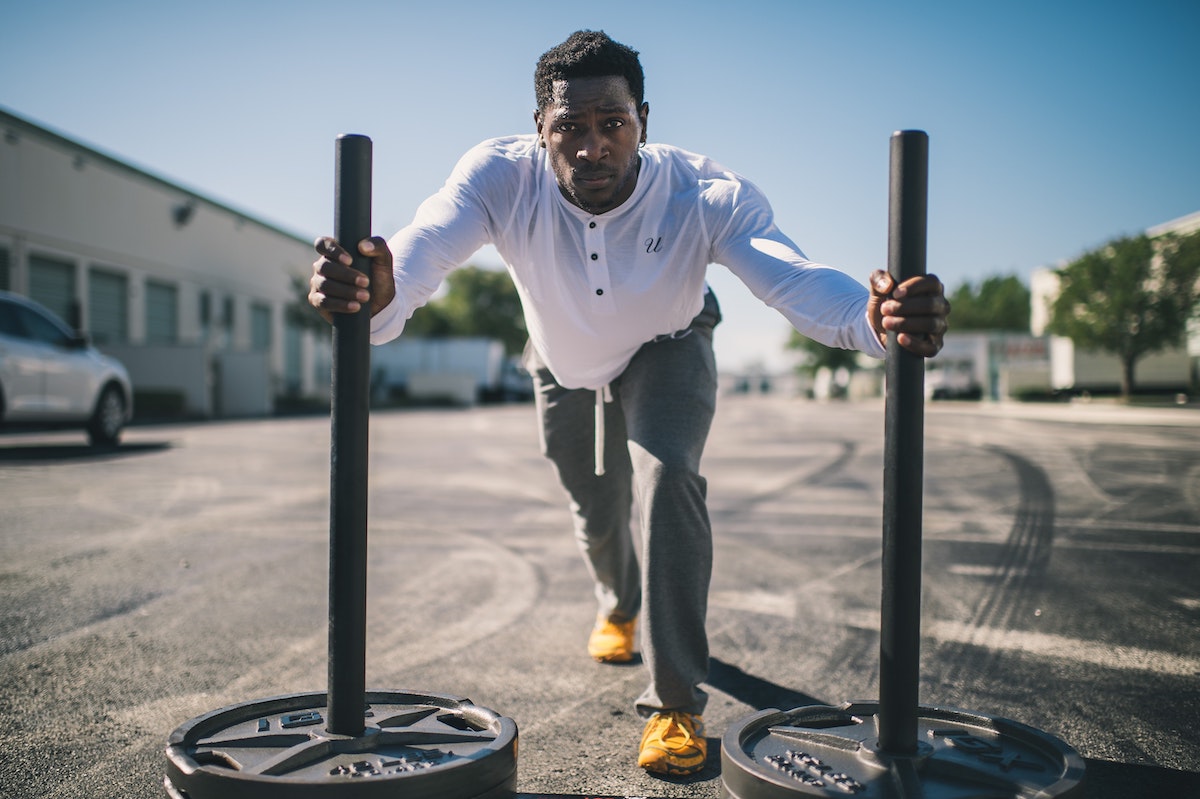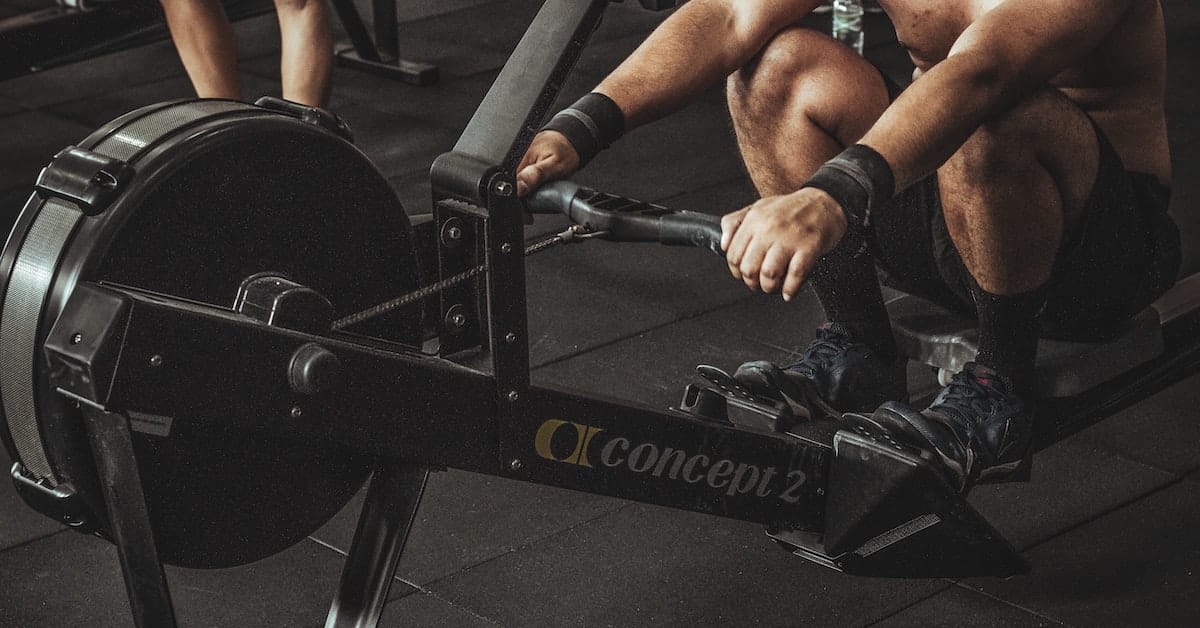High-intensity interval training (AKA “HIIT”) has been a popular training method for years. It’s effective and time-efficient. But, as time has gone on, the methods you see being labeled as “HIIT” are getting farther away from the science that proved the effectiveness of these types of routines.
Just because the high intensity is good, doesn’t mean adding more and more work is better.
The biggest problem with HIIT workouts is that people took a great concept (higher intensity, less rest) and destroyed the execution.
The mindset looks something like this:
“If four minutes is great, then eight minutes must be incredible. And if eight minutes is incredible, then 16 minutes must be mind-blowing.”
This is the opposite of what you want to do. Adding more time does not make all workouts more effective. And, with HIIT, you could easily argue it could reduce the effectiveness of the training.
Table of Contents
Why HIIT Workouts Are So Effective
The name of the game is efficiency. There are many ways to train, but scientists are fascinated by high-intensity interval workouts because, when done correctly, you can see great benefits in less time.
The key with good HIIT programming is doing everything you can to maximize intensity. It’s that intensity that enables you to keep the workouts shorter and experience benefits like muscle building, fat loss, and cardiovascular improvements that you typically see in longer workouts.
But, if you don’t set up your workouts in a way that keeps intensity high, then you start to take away from the power of HIIT.
In general, HIIT workouts are characterized by the following:
- Go hard (work at a high intensity, either heavy weights or lots of reps).
- Rest.
- Repeat.
What makes HIIT so effective is the exercise-to-rest ratio. As decorated strength coach Robert Dos Remedios explains in this blog post, a lot of the most popular training protocols are totally backward when it comes to their work-rest ratio.
Translation: People train for way too long of a period, followed by far too little rest.
Coach Dos explains that for a truly all-out effort, you should rest for as much as 5-6 times the time you spent working. When you train for longer periods while resting for shorter ones, the training winds up being more of a cardio/aerobic challenge — which is okay if that’s your goal.
When you go for too long with too short of rest, you’re likely to decrease the intensity of your work, which is the whole point of high-intensity training.
What is the Best HIIT Workout?
If you want HIIT to work for your body (and schedule) and lead to body transformation and health benefits (HIIT workouts are also shown to improve cognition), then shorter rest periods will necessitate shorter workouts. This is all done to maximize intensity and results. Long HIIT workouts with short rest periods are more likely to lead to burnout and not get the desired effects.
In other words, your “work” periods will influence your rest periods. Keep the work short per Dos Remedios’s recommendations, and as the interval work time increases, make sure your rest increases as well.

An ideal work-to-rest ratio for all-out high-intensity intervals could be:
- 10 seconds of work, followed by 50 seconds of rest
- 20 seconds of work, followed by 100 seconds of rest
- 30 seconds of work, followed by 150 seconds of rest
Now, that’s not to say you can’t do more common intervals like 20 seconds of work followed by 40 seconds of rest.
If you do that, either realize that later sets will be lower intensity, or make sure you do fewer total sets in order to maintain your intensity.
After all (and we can’t stress this enough), the key to HIIT is the intensity. Push your body to maximum output, rest for just enough time to keep that intensity at its highest, and then get back to work.
How Long Should a HIIT Workout Be?
So, what’s the sweet spot? Everyone is going to be a little different based on body type, training experience, and goals. And there are really two important aspects: how many days per week you should do high-intensity training and how many sets you should perform per session.
Craig Marker, Ph.D., an associate professor at Mercer University, explains that you should stop if you are noticing a drop off in your performance from set to set.
“I stop most of my athletes at seven sets as it is difficult to maintain that pace for the full eight. Tabata’s team was working with elite athletes. For the everyday athlete, I might even suggest fewer sets, like three to five.” (You can read more about his approach here).
How Often Should You Do HIIT Workouts?
Because these workouts take more time to recover, it’s recommended that you do a HIIT workout anywhere from 1-3 times per week, depending on the overall volume of your training.
For example, if you’re weight training 4-5 times per week, you’ll respond better if you only do an additional 1-2 HIIT sessions per week. Otherwise, you’ll never recover properly and week-over-week you won’t see as much progress with your training or changes to your body.
If you only train with weights 2-3 times per week, then it’s possible for you to add 2-3 sessions of HIIT per week.
How To Do A HIIT Workout
Using the guidelines above for frequency, here’s how you can build your own HIIT workout using the exercises of your choice. Follow this 2-step process, and then limit your work sets to 4 to 8 rounds, based on your level of fitness.
Step 1: Select The Best HIIT Exercises
As the name would suggest, HIIT workouts should be something that allows you to push at a very high intensity.
If you choose to walk, then you must be able to sprint. If you want to bike, then pedal harder (if you can increase the resistance) or faster. If you’re swimming, swim faster. And, if you’re lifting weights, you’re picking a weight that you can lift for about six reps or where you can move quickly and explosively (think medicine ball slams).

Here are exercises you can pick from (many more exist) to create your HIIT workout:
- Sprint
- Bike
- Rower
- Kettlebell swings
- Versaclimber or stair-stepper
- Jump rope
- Tire flips
- Jump lunges
- Cleans
- Thrusters
- Med ball slams
- Deadlifts or squats
Step 2: Select How Long to Make Your HIIT Workout Last
- 10 seconds of high-intensity work.
- 50 seconds of rest or low-intensity work.
- Repeat for 4-8 rounds.
OR
- 20 seconds of high-intensity work.
- 100 seconds of rest or low-intensity work.
- Repeat for 4-8 rounds.
Step 3: Recover
Remember, intensity isn’t just about how much time you have to recover during a workout, it’s also what you do between workouts. To maintain intensity during your workout, remember to focus on resting 5-6 times as long as your work sets. And, don’t perform HIIT workouts every day because, at some point, your overall intensity will decrease, you won’t make progress from one training session to the next, and that will limit your results.
Now Go Get Your Sweat On
We’ve laid out why high-intensity interval training is effective, what the best HIIT workout practices are, and provided examples of some of our favorite exercises. Remember, the key to proper HIIT training is maintaining a high level of intensity for the entire workout.
Have questions? Share them in the comments below.
Or if you’re looking for more personalization and hands-on support our online coaching program may be right for you. Every client is assigned two coaches — one for nutrition and one for fitness. Find out more here.

Adam Bornstein is a New York Times bestselling author and the author of You Can’t Screw This Up. He is the founder of Born Fitness, and the co-founder of Arnold’s Pump Club (with Arnold Schwarzenegger) and Pen Name Consulting. An award-winning writer and editor, Bornstein was previously the Chief Nutrition Officer for Ladder, the Fitness and Nutrition editor for Men’s Health, Editorial Director at LIVESTRONG.com, and a columnist for SHAPE, Men’s Fitness, and Muscle & Fitness. He’s also a nutrition and fitness advisor for LeBron James, Cindy Crawford, Lindsey Vonn, and Arnold Schwarzenegger. According to The Huffington Post, Bornstein is “one of the most inspiring sources in all of health and fitness.” His work has been featured in dozens of publications, including The New York Times, Fast Company, ESPN, and GQ, and he’s appeared on Good Morning America, The Today Show, and E! News.
Nice and informative info shared! I truly like the valuable info you had provided to your article it’s very helpful and I will definitely try these tips for the best body.
Keep us posted with how these tips work for you! Thanks for being here, Laura!
Very brief article yet very concisely explained and very compact with information! Thanks for sharing these guides on how to properly execute or do HIIT (High-Intensity Training) workouts! I would love to try and do some of these with my friends in this uncertain time amidst the COVID-19 pandemic as we don’t have much to do, so we might as well be fit.
“so we might as well be fit” – Ha! Love it. And happy to hear you are hanging in there during these uncertain times. Be well!
Consistency is important in place of high-intensity sprints. You must seek professional help while performing a HIT workout.
Thanks for reading, Madeline. Yes, it’s probably wise to chat with your doctor before engaging in any high-intensity activity. But outside of any preexisting conditions, you don’t need a professional to help guide your HIIT workouts – you just need to perform them intelligently. And you’re right; consistency is more critical than high-intensity sprints. However, they can still be a great tool once you’ve built that consistency.
Thank you. I got a lot of good ideas about fitness tips after this article
Thanks for reading, Mukul.
Great article on HIIT! I love the fact that you point out the reason HIIT works is because of the “high intensity.” As much as people want magic pills and potions, there is no such thing. If you want the results, you have to put in the time and effort to get the desired results. No shortcuts! Thanks for not sugar-coating it!
No shortcuts — couldn’t agree more. Love the mindset.
Thanks for reading, Christian.
With little to no excuses left to start building muscle and burning fat, it’s time to grab a mat and some dumbbells and get sculpted with HIIT. I can feel the burn already!
Thank you for the information. In my opinion, apart from training and rest time, there is one other mistake that is also important and that people often make.
HIIT is quite intense and requires a lot of energy. So sometimes people really forget about keeping the correct form in their focus on doing the hard work.
I agree, Justin. People often value intensity over form, and that can lead to injuries down the road. That’s why it’s essential to keep your work/rest ratio adequately balanced.
Thank you very much for sharing this. I feel already the warmth of my body.
I enjoyed reading the article.
HIIT workouts are amazing. As someone who has never really been good/enjoyed lost distance/low intensity cardio, HIIT has been a lifesaver for me.
It’s a great way to shed fat and get in shape.
Stoked to hear you found something you love!
Awesome tips. Thank you for sharing.
The only reason I would ever recommend HIIT is to help somebody lose fat and build up general fitness.
It can be an excellent tool for fat loss but is by no means required for successful fat loss. And for general fitness, you can build that foundation with low-intensity methods. But at some point, you need to develop the ability to elevate your heart rate (and quickly lower it post-exercise), and that’s where HIIT fits the bill. Thanks for reading!
That was very informative. I just started with HIT workout sessions and this really helps.
Happy to hear this helped with your new HIIT training! Let us know if you have any questions.
Nice guide about health care.
Hey Adam!
Thank you so much for this incredible stuff on HIIT and further more for teaching a nice stretch sequence. Needy people will get help from your post. Keep writing your awesome posts.
Appreciate the support! Thanks for being here.
Nice blog Posted